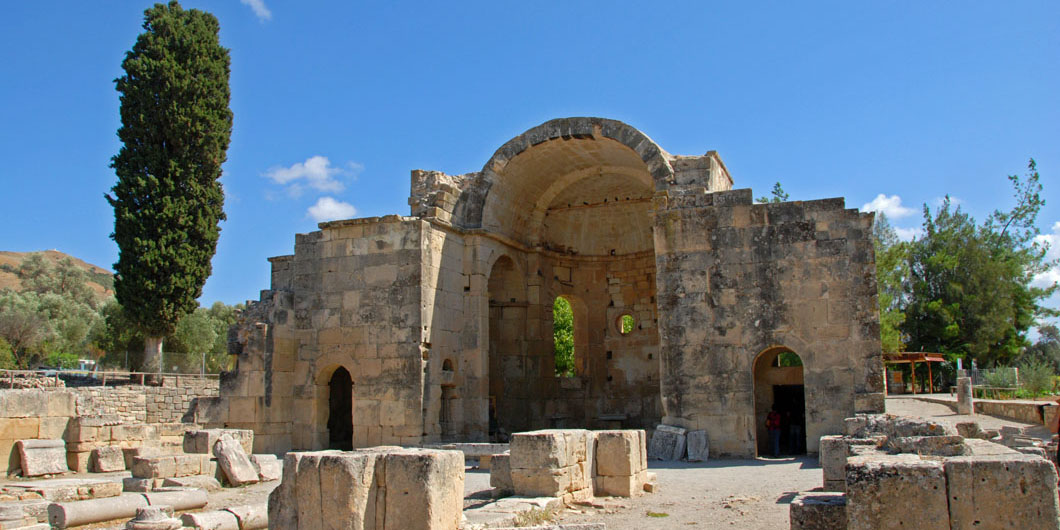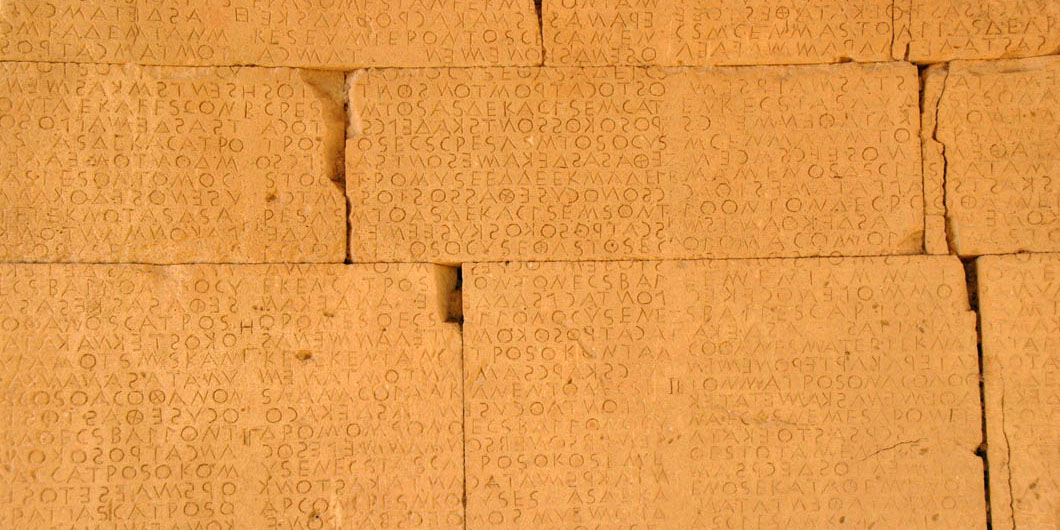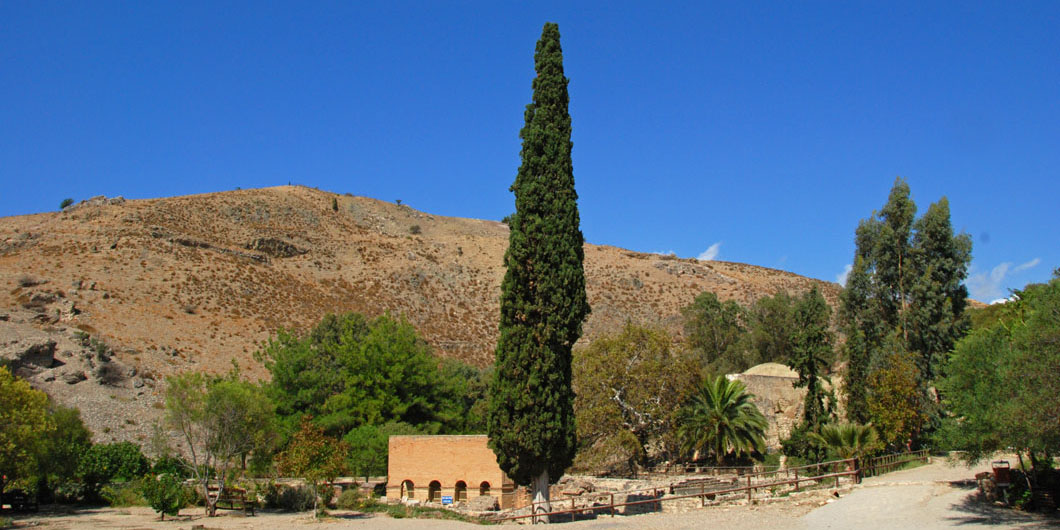The archaeological site of Gortyn is located near the present-day village of Agii Deka, very close to the river Mitropolianos (known as Litheos, in Antiquity), in the Messara region.
One of the most ancient and most powerful cities of prehistorical and historical Crete existed there.

The ruins of ancient Gortyncover an area of 4.000.000 square metres, from the hills of Ai-Yiannis, of Volakas and of Profitis Ilias to the north, as far as the village of Agii Deka to the east, and to Mitrópoli village to the south. These ruins occupy a 2 kilometre long quadrangular area, the large size of which makes this archaeological site the biggest in Crete, and one of the biggest in the whole of Greece.
In the main section of the site, one can see the Roman Odeum (Odeίon), the so-called Great Inscription, which bears the Law Code of Gortyn, and an Early Byzantine church of St. Titus (Agios Titos).
In the Sculpture Gallery, which is situated next to a refreshment stall, one can admire the Roman sculptures unearthed at Gortyn.
The region of Gortyn has been continuously occupied from the Neolithic era (5000-3300 BC) until today. In the Minoan period, a rather insignificant settlement is believed to have existed there. During the Geometric years (10th-8th century BC) the citadel of Gortyn was fortified, and the original nucleus of the urban spread was created, surrounding the temple of goddess Athena. From the 8th century and on, the city expanded towards the south, covering the foothills and the sides of the northern heights, and the banks of the river Litheos. The agora, which was the centre of political activity of ancient Gortyn, was created later, in the historical years. At the same time, small settlements started to appear in the plain to the south, where the sanctuary of Pythian Apollo (Pythios Apolon) was situated. In the Archaic era, a second centre was added to the city, which was dedicated to Apollo, who was then pronounced its patron god.

During the Hellenistic years, Gortyn grew and prospered even more. A second agora was created east of the temple of Apollo, and a sanctuary of the Egyptian deities Isis, Anubis and Serapis was also founded. A large square connected the two parts of the city (old and new), and the initial urban nucleus, on the northern elevation, was fortified. Gortyn had also a stadium and a gymnasium. The nearby cities of Phaistos, Syvritos, Matala and Lebena became mere neighbouring dependencies and ports of Gortyn.
According to mythology, when Zeus reached the shores of Crete in the form of a white bull, carrying Europa, the daughter of the king of Phoenicia, on his back, he first went to Lebena, and then he went on to Gortyn; there, Minos and Rhadamanthus were conceived under an evergreen plane tree, near the river Litheos.
At about the end of the Hellenistic era, Gortyn governed over the whole of south-central Crete, and part of the region of Rethymnon. Górtyn and the town of Axos competed for supremacy over the Idean Cave (Idaion Andron).
The fact that the first silver coins of Crete were minted in Gortyn (470 BC) is indicative of its wealth and power. It was the most populous city of Crete, with 35-40.000 inhabitants, and 5.000 mercenaries.

It is also believed that Gortyn was considered one of the best-governed cities of Crete; this is strongly suggested by the so-called Great Inscription, a summary of inheritance law, family law, and civil proceedings law which was found on the site.
The famous poet, musician, philosopher and legislator Thaletas (or Thales of Crete), who lived in the 7th century BC, originated from Gortyn; it is believed that he introduced the writing and reciting of paeans, as well as the performance of armed dances, to the Spartans.
When the Romans invaded Crete, Gortyn sided with the conquerors; most Cretan cities, on the other hand, with Knossos as their leader, put up resistance and were consequently destroyed. After the conquest, Gortyn became the capital city of the Roman province of Crete and Cyrene, and enjoyed great prosperity.
A construction spree took place in the city; new districts were built up, as well as a majestic praetorium, a large circular theatre, a new agora (the third one in Gortyn) and a hippodrome, which is unique in Greece.

Later on, during the early Christian years, Gortyn was the first Cretan city to welcome the new religion; the nearby village of Agii Deka (= Ten Saints) was named after ten early Cretan Christians who were martyred in Gortyn, in 250 AD. The Apostle Titus was appointed bishop of Crete (based in Gortyn) by the Apostle Paul, and undertook the task of disseminating the Christian religion throughout the island. In the 6th century AD, the Metropolitan church of Saint Titus was built, the ruins of which can be visited today.
The Saracens put an end to the long history of the city, in 828 AD, by destroying Gortyn and even slaughtering Bishop Cyril inside the citadel.
















